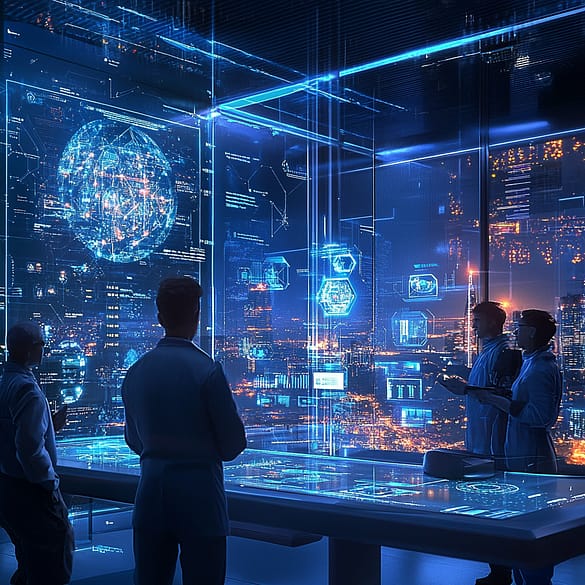The rapid pace of technological innovation continues to reshape the IT landscape. While artificial intelligence (AI) and cloud computing have dominated conversations, several lesser-discussed technologies are set to redefine the future. In 2025, emerging advancements will not only disrupt industries but also introduce new opportunities and challenges. Let’s explore 10 groundbreaking technologies that are poised to shape the future of IT.
1. Quantum Computing: The Next Computational Leap
Quantum computing promises exponential leaps in processing power by leveraging the principles of quantum mechanics. Unlike classical computers that use bits, quantum computers use qubits, allowing them to perform complex calculations at unprecedented speeds. Applications include drug discovery, financial modeling, and cryptography. However, challenges like error rates and cooling requirements hinder widespread adoption.
2. Edge Computing: Processing Data Closer to the Source
As IoT devices proliferate, edge computing is emerging as a solution to reduce latency and improve real-time processing. By decentralizing data processing, edge computing enhances efficiency in smart cities, autonomous vehicles, and industrial automation. Despite its advantages, security concerns and infrastructure demands pose challenges to mass deployment.
3. Web3: The Decentralized Internet Revolution
Web3 aims to shift control from centralized entities to users through blockchain-based applications. By utilizing smart contracts, decentralized finance (DeFi), and NFTs, Web3 offers enhanced privacy, transparency, and security. While promising, scalability and regulatory scrutiny remain key barriers to mainstream adoption.
4. The Metaverse: Blurring the Lines Between Physical and Digital Worlds
The metaverse represents an immersive, interconnected digital space where users interact via virtual reality (VR) and augmented reality (AR). Beyond gaming, the metaverse has implications for remote work, digital commerce, and education. However, technical limitations, data privacy concerns, and interoperability issues must be addressed for widespread integration.
5. 6G Networks: The Future of Hyper-Connectivity
With 5G still rolling out, research into 6G is already underway. Expected to be 100 times faster than 5G, 6G networks will support advanced applications like holographic communications, real-time AI processing, and global IoT connectivity. However, the technology is still in its infancy, requiring breakthroughs in hardware and spectrum management.
6. AI-Powered Code Generation: Automating Software Development
AI-assisted programming tools like GitHub Copilot and OpenAI Codex are revolutionizing software development by automating code generation. These technologies improve developer productivity, reduce errors, and accelerate project timelines. Yet, ethical concerns around reliance on AI-generated code and intellectual property remain areas of discussion.
7. Biocomputing: The Fusion of Biology and IT
Biocomputing explores the use of biological materials, such as DNA, for information processing. This field has the potential to revolutionize data storage, encryption, and complex simulations. While promising, biocomputing is still in experimental stages, requiring further research before commercialization.
8. Autonomous IT Operations (AIOps): The Rise of Self-Healing Systems
AIOps leverages AI and machine learning to automate IT operations, enabling real-time monitoring, anomaly detection, and system optimization. This reduces downtime and enhances efficiency in IT management. Despite its advantages, ensuring reliability and avoiding over-reliance on AI decision-making remain challenges.
9. Zero Trust Architecture (ZTA): Redefining Cybersecurity
As cyber threats grow, Zero Trust Architecture (ZTA) is becoming a critical security framework. Unlike traditional security models, ZTA operates on a ‘never trust, always verify’ principle, requiring continuous authentication and strict access controls. While effective, ZTA implementation can be complex and resource-intensive.
10. Neuromorphic Computing: Mimicking the Human Brain
Neuromorphic computing aims to replicate neural structures in silicon chips, enabling energy-efficient AI systems. This approach holds promise for robotics, AI-driven healthcare, and real-time analytics. However, developing scalable neuromorphic chips remains a significant challenge.
Conclusion: The Future is Now
These emerging technologies will redefine how businesses operate, how IT infrastructures are designed, and how users interact with digital systems. While each innovation presents unique challenges, their potential to transform industries is undeniable. For IT leaders and forward-thinking technologists, staying informed and adapting to these advancements will be key to staying ahead in the digital revolution of 2025 and beyond.

